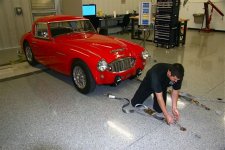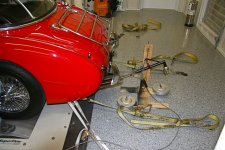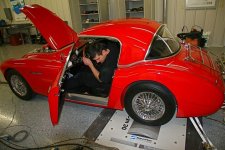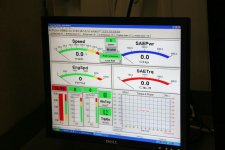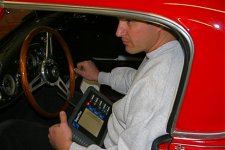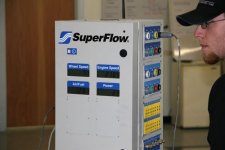Well,
I guess it was time to revisit this subject. I had another dyno run at Loynings Motor Service on Monday. With my newly assembled race motor conservatively build for power and <span style="font-weight: bold">reliability</span>, triple 2" SU's, 268 duration cam/293 lobe lift/440 valve lift, HD valve springs, J &E .40 forged flat top pistons, larger ss valves, matched ported and polished iron head and custom rebuilt stock rockers, 1.50:1 ratio, etc.
After some final carb adjustments, needles, etc. my pulls were 170 RWHP @5200 rpm and held linear through 6100 rpm and 180 RWTQ @ 3000 rpm and held steady through 4500 rpm. These results exceeded my goals especially when my compression ratio fell short what I wanted at 9.7 to 1. In hindsight this should really help in extending the lift cycle of my motor.
Portland Historic Races 7/10-7/12 will be the first outing with the "fully" tuned rebuilt big six-cylinder......................can't wait.
Dougie

 Hi Guest!
Hi Guest!

 smilie in place of the real @
smilie in place of the real @
 Pretty Please - add it to our Events forum(s) and add to the calendar! >>
Pretty Please - add it to our Events forum(s) and add to the calendar! >> 

